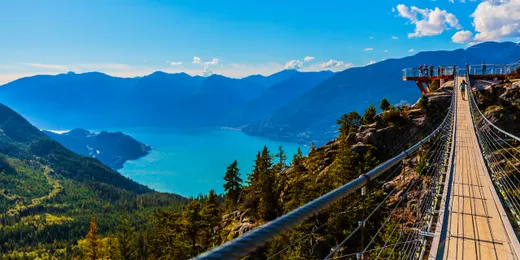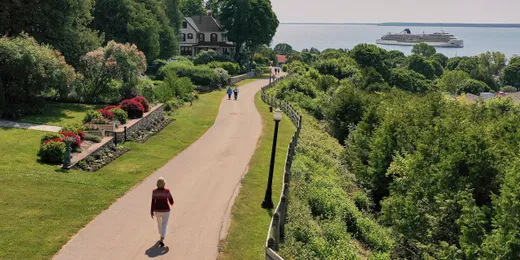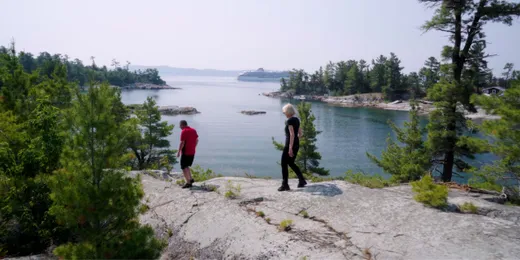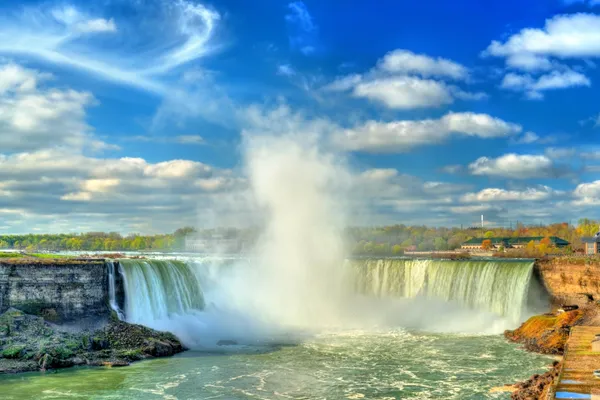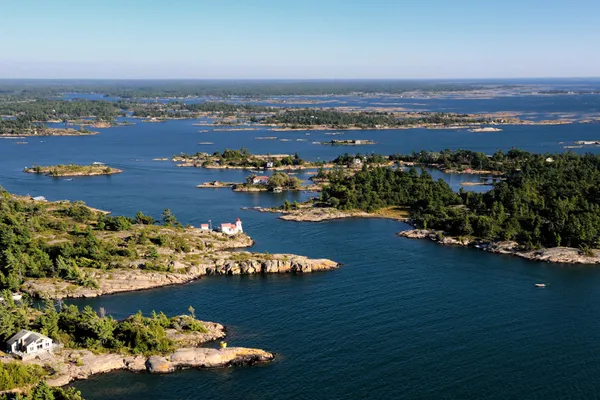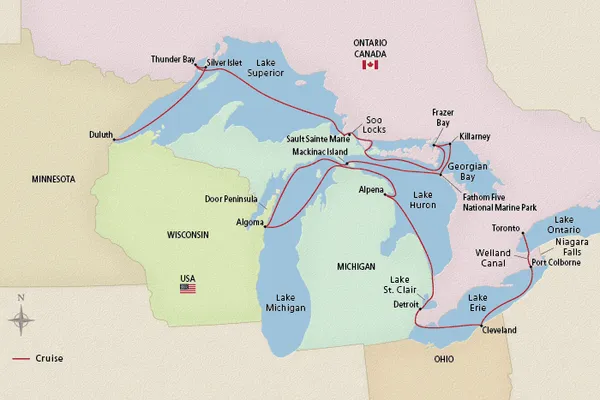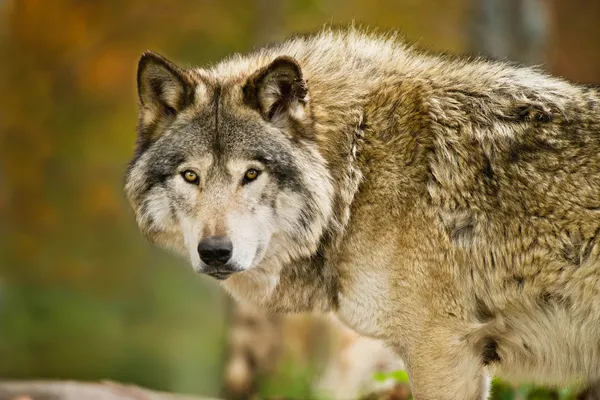
Explore the stunning Great Lakes
Experience the diverse landscapes and culture-rich cities of the Great Lakes. Read on to learn more about the unique geology of this remarkable region and discover the captivating excursions that await you on these picturesque bodies of water. Get acquainted with some of the area’s most popular dishes, uncover the inspiration behind Canada’s first national art movement and explore how this vast freshwater system developed more than 20,000 years ago.

Great Lakes
The Great Lakes comprise the largest freshwater ecosystem on the planet. An iconic part of the geological and cultural heritage of North America, the five lakes—Superior, Michigan, Huron, Erie and Ontario—contain nearly 5,518 cubic miles of water. They account for a full 20 percent of the world’s surface freshwater.
The lakes absorb a great deal of heat during warmer months, resulting in cooler summers and warmer winters than would otherwise occur. During the winter, the lakes’ eastern shores receive substantially higher precipitation, and large areas of the surface waters freeze.
The first inhabitants of the Great Lakes region were the Indigenous peoples, also known as Native Americans, Native Nations or, in Canada, First Nations. Many Indigenous groups living in the Great Lakes region were tribes or bands who spoke the Algonquin languages. The Huron were one such group and were the first people the French explorer Jacques Cartier came across when he arrived in 1534.
This magnificent region boasts stunning national parks and remarkable wildlife, such as river otters, red foxes and, during the spring and fall, many species of migratory birds. The peregrine falcon (Falco peregrinus) is one of the most notable birds in the region; during flight, it can reach diving speeds of more than 200 mph (321 kmh), making it the world’s fastest animal.

-
Cuisine—Popular dishes from the Great Lakes region
During the 19th century, cities around the Great Lakes became important manufacturing centers, making them attractive to immigrants and jobseekers. As a result, the culinary traditions of this region reflect its rich history and the diverse cultures of its inhabitants. Here are some of the area’s signature foods:
- Pasties
A pasty (pronounced “pass-tea”) is an oven-baked, handheld pastry with a savory meat and vegetable filling. Fast, easy and portable, pasties were an ideal meal for workers. Despite their popularity in Michigan, pasties originated in medieval Europe and have a strong traditional link to the English county of Cornwall. - Mackinac Island Fudge
Located in the Straits of Mackinac where Lakes Huron and Michigan meet, this charming island preserves many of its Victorian-era treasures, including this favorite 19th-century confection. Collectively, the island’s 13 fudge shops produce an estimated 9,920 lb (4,500 kg) of fudge each day during the summer season. - Deep-Fried Cheese Curds
The Midwest—especially Wisconsin—became known for dairy farming in the 19th century, as German and Scandinavian families and settlers from New York brought their skills to the region. As their name suggests, cheese curds are made of curdled milk, a byproduct of the cheesemaking process. On their own, their texture is chewy, but when deep-fried in beer batter, they become gooey on the inside and crunchy on the outside. - Great Lakes Perch
During the summer months, many menus around Lakes Ontario and Erie feature yellow perch, which are plentiful in shallow, warmer waters. Lightly pan-fried, this lean fish has a mild, sweet flavor and a beautifully flaky texture.
- Pasties
-
Culture—The Group of Seven, Canada’s first national art movement
During the second decade of the 20th century, a desire to create an artistic identity that was distinctively Canadian led a group of Toronto, Ontario-based painters to start Canada’s first national art movement—the Group of Seven.
The group’s members—Franklin Carmichael, Lawren Harris, A.Y. Jackson, Frank Johnston, Arthur Lismer, J.E.H. MacDonald and Fredrick Varley—met while working as commercial artists at the influential Toronto advertising firm Grip Ltd. They bonded over a shared devotion to landscape painting and sought to be free from the constraints of the conservative, European-centric traditions that dominated painting at the time. The group formally adopted its name for its first exhibition, which was held in Toronto in 1920.
Drawing inspiration from the post-impressionists and contemporary Scandinavian landscape painters, these painters focused on the ruggedly beautiful and unique character of the expansive Canadian outdoors. They often depicted landscape scenes rendered in impasto and composed of bright colors and bold forms.
Their works created a vivid visual language to describe the vast scale of Canada’s landscape while invoking the burgeoning sense of the new country’s identity and independence. This can be seen in works such as Jackson’s energetic The Red Maple (1914), the looming clouds and impressionist hills of MacDonald’s October Shower Gleam (1922) or the simplified and idealized landscape of Harris’ Mount Robson (1922).
Influential for more than a decade, the group went from receiving mixed reviews of their first exhibition to worldwide recognition as Canadian art pioneers. Having achieved their goal of establishing a distinctive Canadian artistic identity, the group officially disbanded in 1933. Its members went on to form the Canadian Group of Painters movement with other like-minded artists.
Today, many of the masterpieces created by the Group of Seven and their contemporaries can be seen on display at Toronto’s Art Gallery of Ontario, one of the largest art museums in North America. Visitors can also take in some of the majestic Great Lakes scenery that inspired these artists, particularly in the stunning Muskoka region and near the historic town of Sault Sainte Marie.
-
Nature—The formation of the Great Lakes
Geologically, the Great Lakes are relatively young. They did not exist during preglacial times but were created after the Earth’s last period of large-scale glaciation during the Pleistocene Epoch, a time when the Laurentide Ice Sheet covered the northern United States and most of Canada in a mile-thick layer of ice.
Approximately 20,000 years ago, rising global temperatures caused the ice sheet to start receding. The extreme weight and power of the retreating Wisconsin Ice Sheet that covered the Great Lakes region slowly carved out vast basins, causing melting ice to become trapped by the newly uncovered banks of sand, loose rock and boulders. Over time, water continued to accumulate, eventually forming large inland seas.
The erosion of this massive ice sheet and the formation of the lakes was not a steady process. At one time, present-day Lakes Superior, Michigan and Huron were part of two vast inland lakes called Duluth and Algonquin. As the glaciers continued their northern journey, these two lakes created one gigantic lake.
It was not until around 3,000 years ago that the Great Lakes reached their present-day size and form, an iconic feature that gives the state of Michigan its distinctive “mitten” shape.
Great Lakes Highlights
With more than 10,000 miles of coastline, the Great Lakes region offers much to discover. Captivating cities, charming islands and tranquil waterways await your exploration. Here are just some of the highlights you may experience on a Great Lakes voyage:
- Explore the largest freshwater ecosystem on Earth
- Watch for wildlife, from bald eagles to bears
- Hike through stunning, pristine forests
- Learn about Canada’s colonial past
- Kayak in Georgian Bay—a UNESCO Biosphere Reserve
- Visit the world-class Milwaukee Art Museum
- Transit engineering marvels like the Soo Locks
- Explore Sleeping Bear Dunes National Lakeshore
Destination Insight Videos
-
At home in Canada with Aaron Lawton (25:16)
Enjoy another glimpse of “The Great White North” with Viking Expeditions Operations Manager Aaron Lawton, who leads us through some of his favorite places in Canada. Discover his British Colombia home in Squamish, then visit Vancouver and explore the Great Lakes, where Aaron offers us a peek into the best places to kayak and hike.
-
Discover the Great Lakes region with Jean Newman Glock (49:46)
Join Viking Ambassador-at-Large Jean Newman Glock as she travels “Beyond the Brochure” and explores the hidden gems of Lake Michigan and Lake Huron. In Alpena, MI, Jean visits the Thunder Bay Marine Sanctuary where she uncovers the remarkable efforts being made to preserve the shipwrecks resting beneath the waves. Then, she journeys to Algoma, WI, on Lake Michigan to raise a glass to the picturesque von Stiehl Winery and sample local varietals. Finally, Jean arrives at Mackinac Island and heads to the iconic Grand Hotel to enjoy tea with a resident historian who sheds light on how the hotel survived Prohibition.
-
Discover Canada’s Georgian Bay with Jean Newman Glock (29:58)
Join Viking Ambassador-at-Large Jean Newman Glock once again as she explores the scenic parks and vital waterways of the Great Lakes region. In this episode of Beyond the Brochure, Jean admires a remarkable birch bark canoe crafted by local First Nations people and learns about beekeeping In Killbear Provincial Park. Then, she journeys across the Georgian Bay and witnesses a NOAA balloon launch from the deck of one of our state-of-the-art expedition ships. She concludes her visit in the charming Okeechobee Lodge in Frazer Bay, where she enjoys stunning views of Baie Fine—the largest freshwater fjord in the world.
-
Explore America’s Great Lakes with guest lecturer Russell Lee (1:20:26)
Enjoy another opportunity to expand your knowledge of the Great Lakes with award-winning writer and guest lecturer Russell Lee as he presents “The Story of Highway H2O: From the Great Lakes to the Atlantic Ocean.” Shared in his signature thought-provoking style, Russell’s lecture covers the history of the Great Lakes over the past 150 years, including the construction of the Erie Canal and St. Lawrence Seaway.
Great Lakes Travel FAQ
All-Inclusive Itineraries—Great Lakes
Choose one of our enriching, all-inclusive voyages and discover the many benefits of exploring in Viking comfort.



